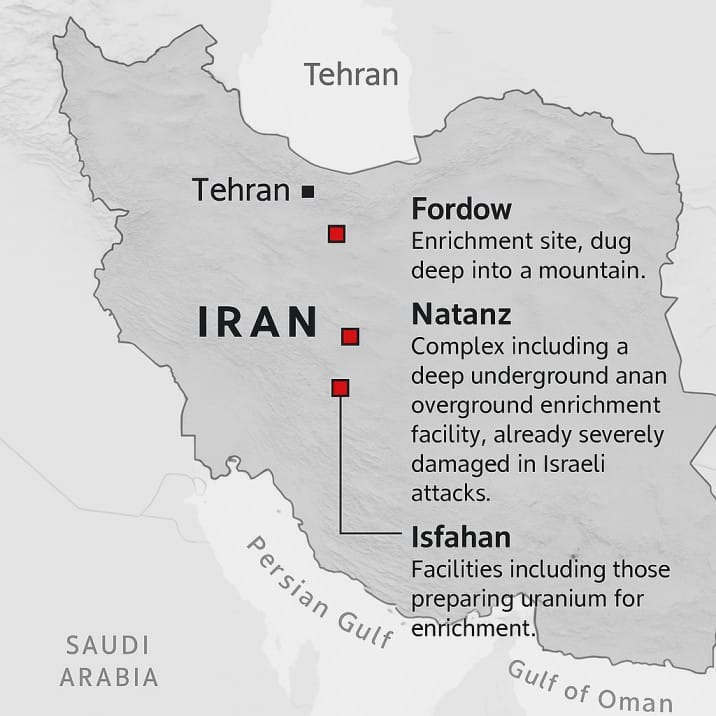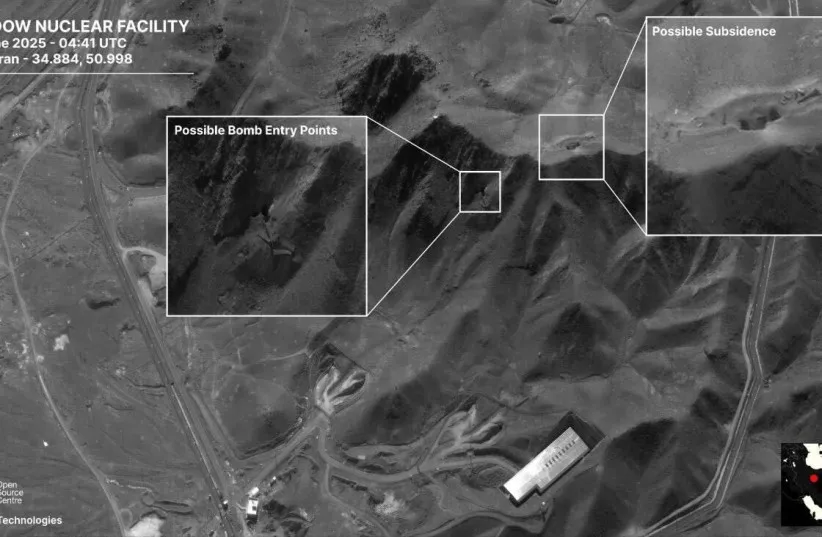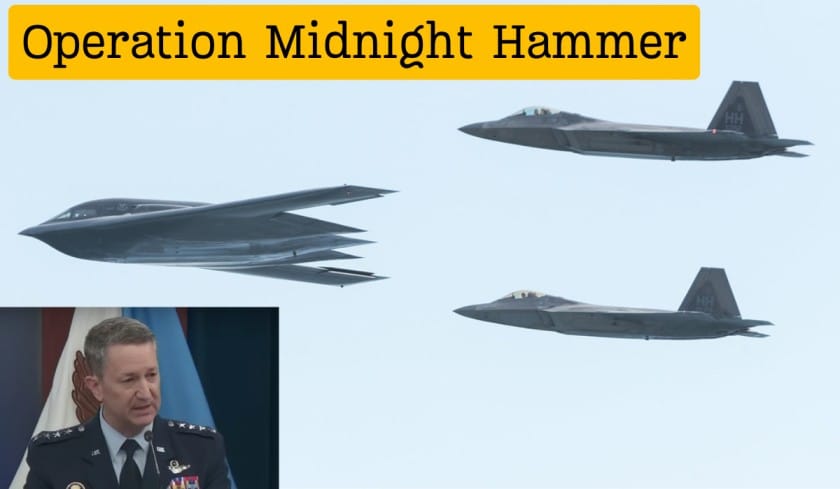Historic Operation Midnight Hammer Destroys Three Key Nuclear Sites
The United States recently carried out a major air strike, one of the biggest in many years, aimed at critical nuclear sites in Iran, specifically in the locations of Fordow, Natanz, and Isfahan. This operation was named “Operation Midnight Hammer.”
The mission, which was ordered by President Donald Trump, involved more than 125 planes. It was significant because it was the first time the military used its most advanced bombs designed to penetrate deep into bunkers.
“Last night, on President Trump’s orders, US Central Command conducted a precision strike… It was an incredible and overwhelming success,” Defense Secretary Pete Hegseth said at a Pentagon briefing Sunday.
Get live updates on the issue here – Operation Midnight Hammer updates
Mission Details and Execution

Precision Strike Package
Recently, more than two dozen Tomahawk cruise missiles were fired from a US submarine, striking several vital buildings and facilities in Isfahan.
General Dan Caine, the Chairman of the Joint Chiefs of Staff, explained that “the main attack team included seven B-2 Spirit bombers, each carrying a small crew of two people. These planes made their way quietly eastward with very little communication. During their 18-hour journey to the target area, the bombers successfully refueled in the air several times.”
Deception Operations
The mission used clever tricks to confuse the enemy. Some of the bombers flew west into the Pacific Ocean to act as decoys. General Caine explained that this was part of a strategy to keep the element of surprise. Only a few key planners and leaders in Washington and Tampa were aware of this deception plan.
Timeline of Attack
The strikes took place with precise timing between 6:40 pm and 7:05 pm Eastern Time, which was 2:10 am local time in Iran. Just before 5 pm EST, bombers launched submarine-fired Tomahawk missiles toward Isfahan. The first B-2 bomber released bunker-buster bombs on the Fordow facility right at 6:40 pm EST.
General Caine confirmed that all three Iranian nuclear targets were hit between 6:40 pm and 7:05 pm Eastern Time, and he noted that the whole operation wrapped up in just 25 minutes.

Weapons Arsenal and Military Capabilities
Operation Midnight Hammer demonstrated an impressive level of firepower, utilizing approximately 75 carefully targeted weapons. This mission achieved several significant milestones for the military:
- First operational use of the GBU-57 MOP bunker-buster bombs
- Largest B-2 operational strike in US history
- The second most extended B-2 mission ever flown, exceeded only by missions following the September 11 attacks
“No other military in the world could do this,” General Caine stated, emphasizing that “Iran’s surface-to-air missile systems did not see us” and “we are currently unaware of any shots fired at the US strike package on the way in.”
Presidential Response and Future Warnings
President Trump, accompanied by Vice President JD Vance, spoke to the nation shortly after a military strike. He confirmed that the operation was successful but cautioned about the possibility of further conflict. “We have destroyed Iran’s key nuclear facilities. Iran, which has been a tough player in the Middle East, now needs to seek peace. If they choose not to, future attacks could be even bigger and much easier to carry out,” Trump stated.
He also mentioned, “We still have many other targets we can hit,” suggesting that if diplomatic talks don’t work out, further military action may be ahead.
Damage Assessment and Iranian Response
“Initial reports from General Caine indicate that all three locations were severely damaged in the recent strikes. He mentioned that it will take some time to gather complete information on the situation.
Iranian officials have acknowledged the attacks but have attempted to minimize the damage, with Hassan Abedini, a deputy director at Iran’s state broadcaster, stating that Iran didn’t suffer a significant loss because it had already removed essential materials from the sites. Meanwhile, Foreign Minister Abbas Araghchi condemned the strikes, calling them a serious violation of international law, and warned that Iran “reserves the right to respond.”
International Reactions and Strategic Implications
The military operation has sparked mixed reactions worldwide. UN Secretary-General Antonio Guterres described the strikes as a “dangerous escalation” of tensions. Meanwhile, UK Prime Minister Sir Keir Starmer claimed that the actions were intended to reduce the threat from Iran’s nuclear program. On the other hand, Russia’s Dmitry Medvedev criticized former President Trump, saying this could lead to “a new war.”
Defense officials stressed that the mission had a specific focus. “This mission was not about changing the government,” Hegseth explained, noting that the airstrikes were aimed solely at nuclear facilities and did not target Iranian soldiers or civilians.
The situation has become much more intense in the Middle East, which could lead to serious new conflicts, especially with the ongoing fighting in Gaza and Lebanon. The big question now is whether Iran will try to rebuild its nuclear facilities, move its programs underground to keep them hidden, or try to find a peaceful agreement. This is a critical issue for both Iran and the other countries involved.
Also read – US Moves B-2 Stealth Bombers as Iran-Israel tensions rise.
